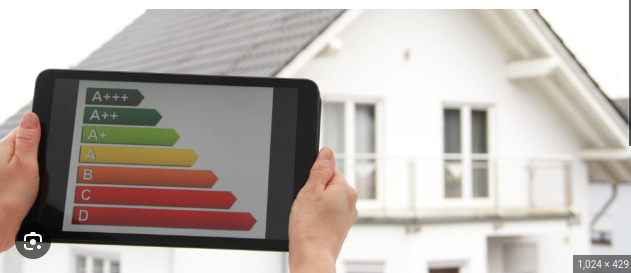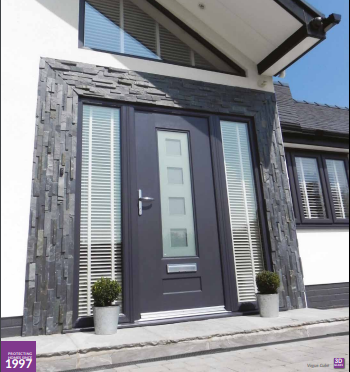Houses of Multiple Occupancy (HMOs): What Landlords Should Know
My Guide For Landlords Thinking About Creating Houses of Multiple Occupancy.

Introduction
Houses of Multiple Occupancy (HMOs) have become a popular choice for landlords looking to maximise rental income. These properties, where separate individuals or households share common facilities, can offer higher rental yields compared to traditional single-let properties. However, operating an HMO comes with its own set of regulations and considerations that landlords must be aware of. In this article, we will provide a comprehensive guide for landlords on what they should know when dealing with HMOs. From licensing requirements to safety regulations and tenant management, understanding these crucial aspects will help landlords navigate the HMO landscape successfully and ensure compliance with the law.
Brief Overview
1. Understanding HMO Definition and Licensing
To begin, it's important for landlords to grasp the definition of an HMO and determine whether their property falls under this category. HMOs are properties where multiple individuals or households share common facilities. Landlords must familiarise themselves with the specific criteria that define an HMO in their jurisdiction. Additionally, many areas require mandatory licensing for certain types of HMOs, and landlords must ensure they comply with these licensing regulations. This section will delve into the definitions and licensing requirements, highlighting the importance of obtaining the appropriate licence for operating an HMO.
2. Meeting Health and Safety Regulations
HMOs have stringent health and safety regulations to ensure the well-being of tenants. From fire safety measures to adequate sanitation and maintenance, landlords must be proactive in meeting these requirements. This section will discuss the essential safety measures that need to be implemented, such as fire alarms, fire doors, emergency exits, and regular safety inspections. Landlords will gain insights into the importance of conducting risk assessments, maintaining gas and electrical safety certificates, and managing common areas to ensure a safe living environment for tenants.
3. Tenant Management and Compliance
Managing an HMO requires effective tenant management and compliance with specific regulations. Landlords must establish clear tenancy agreements, outlining the responsibilities of both parties and the rules for communal living. Additionally, regular inspections, addressing tenant concerns, and managing conflicts among residents are vital aspects of HMO management. This section will provide guidance on effective tenant screening, handling tenant turnover, and resolving disputes. It will emphasise the significance of maintaining good communication with tenants to foster a positive living environment.
4. Maximising Rental Income and Occupancy
One of the primary benefits of HMOs is the potential for higher rental income. Landlords must be strategic in maximising the occupancy and profitability of their HMO properties. This section will explore various strategies such as targeting specific tenant markets, optimising room layouts, and enhancing property amenities to attract and retain tenants. Furthermore, landlords will learn about rental valuation techniques, rental yield calculations, and the importance of ongoing property maintenance to ensure long-term financial success.
5. Conclusion
Operating an HMO can be a lucrative venture for landlords, but it comes with distinct responsibilities. Understanding the definition of an HMO, obtaining the appropriate licences, meeting health and safety regulations, and implementing effective tenant management strategies are crucial for success. By following these guidelines and staying updated on the evolving HMO regulations, landlords can navigate the HMO landscape confidently and achieve sustainable rental income. Remember, compliance with regulations and providing a safe and comfortable living environment for tenants should always be top priorities.
Disclaimer: The information provided in this article is for general informational purposes only and should not be considered legal or financial advice. Landlords are advised to consult with legal professionals and local authorities to ensure compliance with specific HMO regulations in their area.
1.1 Understanding HMO Definition and Licensing
To successfully navigate the world of Houses of Multiple Occupancy (HMOs), landlords must have a solid understanding of the HMO definition and the licensing requirements specific to their jurisdiction. This section will delve deeper into these important aspects and shed light on their significance in operating an HMO.
Defining an HMO:
An HMO, or House of Multiple Occupancy, refers to a property where three or more individuals from separate households reside, sharing common facilities such as bathrooms, kitchens, or living areas. The key distinction of an HMO is that the occupants do not form a single household. However, it is essential to note that the exact definition and criteria for an HMO can vary between different regions and local authorities. Landlords should consult the specific regulations in their jurisdiction to determine whether their property falls under the HMO classification.
Licensing Requirements:
Many areas require HMOs to obtain a mandatory license to ensure that these properties meet specific standards of safety and management. The licensing requirements are typically in place to protect the well-being of the tenants and ensure that landlords are responsible and competent in operating an HMO. Failure to obtain the required license can result in significant penalties and legal consequences.
The licensing process involves submitting an application to the local authority or housing department responsible for HMO regulation. Landlords must provide detailed information about the property, including its size, number of occupants, and the proposed management arrangements. Additionally, they may need to meet specific criteria related to fire safety, amenity provision, and tenant welfare.
It's important to note that the licensing requirements can vary depending on the size and type of HMO. For instance, certain regions may have additional licensing obligations for large HMOs, also known as mandatory licensable HMOs, which typically have five or more occupants forming two or more households. In contrast, smaller HMOs, known as additional licensable HMOs, may require licensing if they meet certain criteria outlined by the local authority.
When applying for an HMO license, landlords should be prepared to undergo an inspection of the property by the local authority. The inspection ensures that the HMO meets the required standards of safety, amenities, and management. Landlords must address any issues or recommendations identified during the inspection to secure the license.
Landlords should also be aware that HMO licenses are typically valid for a specific period, often five years, after which they need to be renewed. It's essential to keep track of license expiry dates and initiate the renewal process in a timely manner to avoid operating an unlicensed HMO.
Conclusion
Understanding the definition of an HMO and the licensing requirements is fundamental for landlords venturing into the world of multiple occupancy properties. By familiarising themselves with the criteria that define an HMO and the specific licensing obligations in their jurisdiction, landlords can ensure compliance with the law and provide a safe and well-managed living environment for their tenants. Obtaining the necessary HMO license demonstrates professionalism, commitment to tenant welfare, and adherence to regulatory standards. Landlords should consult local authorities and seek professional advice to navigate the licensing process successfully and stay up to date with any changes or updates in HMO regulations.
2.1 Meeting Health and Safety Regulations in HMOs
Ensuring the health and safety of tenants is a primary responsibility for landlords operating Houses of Multiple Occupancy (HMOs). HMOs are subject to stringent health and safety regulations to protect the well-being of residents and minimise the risks associated with shared living spaces. This section will delve deeper into the specific measures and considerations landlords must address to comply with these regulations and create a safe living environment.
Fire Safety:
Fire safety is of utmost importance in HMOs due to the higher occupancy and shared living spaces. Landlords must implement robust fire safety measures to prevent and mitigate the risks of fire. This includes installing appropriate fire detection and alarm systems, such as interconnected smoke alarms and heat detectors, in all relevant areas of the property. Regular testing and maintenance of these systems are crucial to ensure their effectiveness.
Furthermore, landlords should provide clear escape routes and ensure that fire exits are easily accessible and unobstructed at all times. Fire doors, with suitable fire resistance ratings, should be installed to compartmentalise the property and delay the spread of fire. Adequate fire safety signage and instructions should also be prominently displayed throughout the premises.
Structural and General Safety:
Maintaining the structural integrity of the property is essential for ensuring the safety of HMO occupants. Regular inspections should be conducted to identify and address any structural issues promptly. This includes ensuring that walls, floors, stairs, and handrails are sturdy and in good condition.
General safety considerations encompass a range of areas, including electrical safety, gas safety, and water safety. Landlords must ensure that electrical installations are regularly inspected by a qualified professional and that necessary repairs or upgrades are carried out. Gas appliances and systems should be inspected and maintained annually by a Gas Safe registered engineer to prevent gas leaks or other hazards. Additionally, landlords should ensure that water supply and plumbing systems are functioning properly to minimise the risk of leaks or contamination.
Adequate Amenities and Sanitation:
HMOs must provide adequate amenities and sanitation facilities to meet the needs of the occupants. This includes ensuring an adequate number of bathrooms, toilets, and washing facilities are available, considering the size and occupancy of the property. Regular cleaning and maintenance of these facilities are essential to maintain hygiene standards.
Additionally, landlords should provide suitable kitchen facilities with appropriate appliances, storage space, and ventilation. It is crucial to ensure that these areas are well-maintained, clean, and equipped with fire safety measures, such as fire blankets and extinguishers.
Risk Assessments and Maintenance:
Conducting regular risk assessments is a vital part of maintaining health and safety in an HMO. Landlords should identify potential hazards and take appropriate measures to eliminate or minimise them. This includes assessing risks associated with fire safety, electrical installations, furniture, and general maintenance.
Routine maintenance and repairs are essential to address any issues promptly and maintain the property in a safe condition. This includes inspecting and servicing heating systems, fixing faulty appliances, and ensuring that plumbing and drainage systems are functioning correctly.
Conclusion:
Meeting health and safety regulations in HMOs is paramount to ensure the well-being of tenants. By implementing robust fire safety measures, addressing structural and general safety concerns, providing adequate amenities and sanitation facilities, and conducting regular risk assessments and maintenance, landlords can create a safe living environment for HMO occupants. It is crucial to stay updated with relevant regulations and seek professional advice when needed to ensure compliance and safeguard the health and safety of tenants in HMO properties.
3.1 Tenant Management and Compliance in HMOs
Effective tenant management and compliance with regulations are essential aspects of operating Houses of Multiple Occupancy (HMOs) in the United Kingdom. Landlords must establish clear guidelines and procedures to ensure a harmonious living environment for tenants while meeting their legal obligations. This section will explore key considerations in tenant management and compliance, providing landlords with valuable insights and strategies to navigate this aspect successfully.
Tenancy Agreements:
Landlords should establish comprehensive tenancy agreements that clearly outline the rights and responsibilities of both the landlord and tenants. These agreements should cover essential aspects such as rent payment terms, duration of the tenancy, notice periods, and any specific rules or regulations related to the HMO. It is crucial to provide tenants with a copy of the agreement and ensure they understand its contents before signing.
Tenant Screening:
Thorough tenant screening is vital to select suitable occupants for an HMO. Landlords should conduct background checks, including reference checks from previous landlords or employers, to assess the reliability and suitability of prospective tenants. This process helps identify tenants who are likely to adhere to the rules and maintain a peaceful coexistence within the shared living space.
Communication and Conflict Resolution:
Open and effective communication is crucial for successful tenant management in HMOs. Landlords should establish clear lines of communication and be readily accessible to address tenant concerns or inquiries. Regular communication helps build rapport with tenants and fosters a positive living environment.
Inevitably, conflicts may arise among tenants sharing common facilities. Landlords should have procedures in place to handle such situations promptly and impartially. Mediation and conflict resolution techniques can be employed to encourage tenants to resolve disputes amicably. It is essential for landlords to promote a harmonious atmosphere by encouraging respectful interaction and providing guidelines on conflict resolution within the HMO.
Inspections and Maintenance:
Regular inspections of the property are necessary to ensure compliance with health and safety regulations and maintain the standard of the HMO. Landlords should schedule periodic inspections to assess the condition of the property, identify any maintenance issues, and address them promptly. Tenants should be notified in advance of inspection dates and provided with a clear understanding of their rights and responsibilities during these visits.
Prompt response to maintenance requests is crucial for tenant satisfaction and well-being. Landlords should establish a system for tenants to report maintenance issues and ensure that repairs are carried out in a timely manner. Regular maintenance of communal areas, such as staircases, hallways, and shared amenities, is equally important to create a safe and pleasant living environment.
Tenant Turnover and Vacancies:
Managing tenant turnover and vacancies is an ongoing challenge in HMOs. To minimise vacancies, landlords can employ effective marketing strategies to attract suitable tenants. Understanding the target market for the HMO, such as students or young professionals, can help tailor advertising efforts accordingly.
When a tenant decides to leave, landlords should follow proper procedures for handling the end of the tenancy. This includes conducting thorough property inspections, settling any outstanding issues, and refunding the deposit in accordance with relevant regulations. The process of finding new tenants should begin promptly to minimise potential income loss.
Conclusion:
Successful tenant management and compliance with regulations are crucial components of operating HMOs in the United Kingdom. By establishing clear tenancy agreements, conducting thorough tenant screening, promoting effective communication and conflict resolution, conducting regular inspections and maintenance, and managing tenant turnover and vacancies efficiently, landlords can create a positive and compliant environment for tenants in their HMO properties. Staying updated with relevant regulations and seeking professional advice when necessary will help landlords navigate the intricacies of tenant management and maintain a successful HMO operation.
4.1 Maximising Rental Income and Occupancy in HMOs
One of the key advantages of operating Houses of Multiple Occupancy (HMOs) in the United Kingdom is the potential for higher rental income compared to traditional single-let properties. To fully capitalise on this opportunity, landlords must employ effective strategies to maximise rental income and occupancy rates. This section will explore various considerations and techniques to help landlords optimise their HMO rental income and occupancy levels.
Targeting the Right Tenant Market:
Understanding the target market for your HMO is essential to attract suitable tenants and ensure high occupancy rates. Consider factors such as location, nearby amenities, and the type of tenants your property is best suited for. For example, if your HMO is located near a university, targeting students might be an effective strategy. Alternatively, if your property is in a city centre with access to business districts, targeting young professionals could be more beneficial. Tailor your marketing efforts and property features to appeal to your target tenant market.
Room Configuration and Amenities:
The layout and amenities of your HMO play a significant role in attracting tenants and commanding higher rental income. Optimise the use of space by providing well-designed and comfortable rooms. Consider incorporating features such as en-suite bathrooms, built-in storage, and desks for studying or working. Providing reliable and high-speed internet connectivity is also important, as many tenants require internet access for work or study purposes.
Communal areas should be well-maintained, inviting, and equipped with modern facilities. A functional and well-equipped kitchen, comfortable communal living spaces, and laundry facilities can enhance the appeal of your HMO to potential tenants. Consider the needs and preferences of your target market when designing or upgrading these shared areas.
Regular Property Maintenance:
Maintaining your HMO to a high standard is crucial for attracting and retaining tenants. Regular property maintenance ensures that your property remains in good condition, minimises vacancies, and enhances tenant satisfaction. Attend to repairs promptly and carry out routine maintenance tasks such as painting, cleaning, and landscaping to maintain a positive living environment.
By conducting regular inspections, you can identify any issues early on and address them before they become major problems. This proactive approach not only ensures tenant safety and comfort but also helps protect the long-term value of your property.
Rental Valuation and Yield Calculation:
Conducting thorough rental valuations and yield calculations will help you determine appropriate rental rates and assess the financial performance of your HMO. Research local market trends and comparable properties to gauge rental demand and market rates. Consider factors such as location, property condition, amenities, and services provided when determining your rental value.
Calculate your rental yield by dividing the annual rental income by the property's value and multiplying by 100. This calculation provides insight into the potential return on investment from your HMO. Regularly review and adjust rental rates to remain competitive in the market and maximise your rental income.
Marketing and Tenant Retention:
Effective marketing strategies are vital for attracting tenants and maintaining high occupancy rates. Utilise various channels such as online property portals, social media, local advertising, and networking within relevant communities. Highlight the unique selling points of your HMO, such as its location, amenities, and the quality of accommodation on offer.
Tenant retention is equally important for maximising rental income. Establish good relationships with your tenants, promptly address any concerns or maintenance issues, and provide exceptional customer service. Happy and satisfied tenants are more likely to stay longer, reducing turnover and the associated costs of finding new tenants.
Conclusion:
Maximising rental income and occupancy in HMOs requires a strategic and proactive approach. By targeting the right tenant market, optimising room configuration and amenities, maintaining the property to a high standard, conducting thorough rental valuations, implementing effective marketing strategies.
5.1 Conclusion: My Guide To Houses of Multiple Occupancy (HMOs): What Landlords Should Know.
Maximising rental income and occupancy in HMOs is a multifaceted task that requires careful planning and execution. By considering the target tenant market, optimising room configurations and amenities, maintaining the property to a high standard, conducting thorough rental valuations, implementing effective marketing strategies, and focusing on tenant retention, landlords can increase their rental income and achieve high occupancy rates.
Understanding the needs and preferences of your target market is crucial for attracting the right tenants. By tailoring your property and marketing efforts to cater to their requirements, you can stand out in the competitive rental market and attract a steady stream of tenants.
Investing in the layout and amenities of your HMO can significantly impact its desirability and rental potential. Well-designed rooms with modern features and comfortable communal areas create a pleasant living environment that tenants are willing to pay a premium for.
Prioritising regular property maintenance ensures that your HMO remains in excellent condition, minimises vacancies, and keeps tenants satisfied.
Accurate rental valuations and yield calculations help you set appropriate rental rates and assess the financial performance of your HMO. By staying informed about local market trends and adjusting your rates accordingly, you can maximise your rental income while remaining competitive.
Effective marketing strategies are essential for attracting tenants to your HMO. Utilise a variety of channels to reach your target audience and emphasise the unique selling points of your property. Building positive relationships with your tenants, promptly addressing their concerns, and providing excellent customer service will enhance tenant satisfaction and increase tenant retention rates.
In conclusion, by implementing these strategies and consistently monitoring and adapting your approach, you can optimise the rental income and occupancy levels of your HMO. It is important to stay updated with industry trends and regulations, and seek professional advice when needed, to ensure you are making informed decisions and maintaining compliance. With careful management and attention to detail, your HMO can become a successful and profitable investment in the UK rental market.










